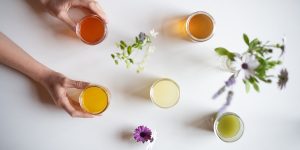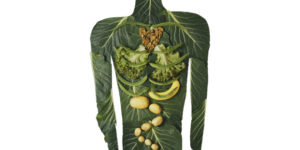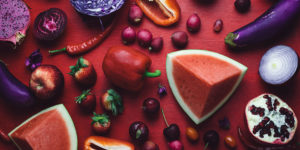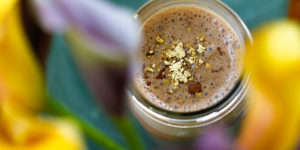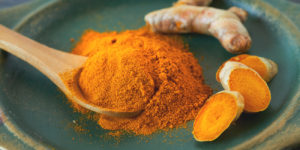Kitchen Medicines:
10 Delicious Medicinal Foods That Belong in Every Kitchen
BY ELLEN EVERT HOPMAN
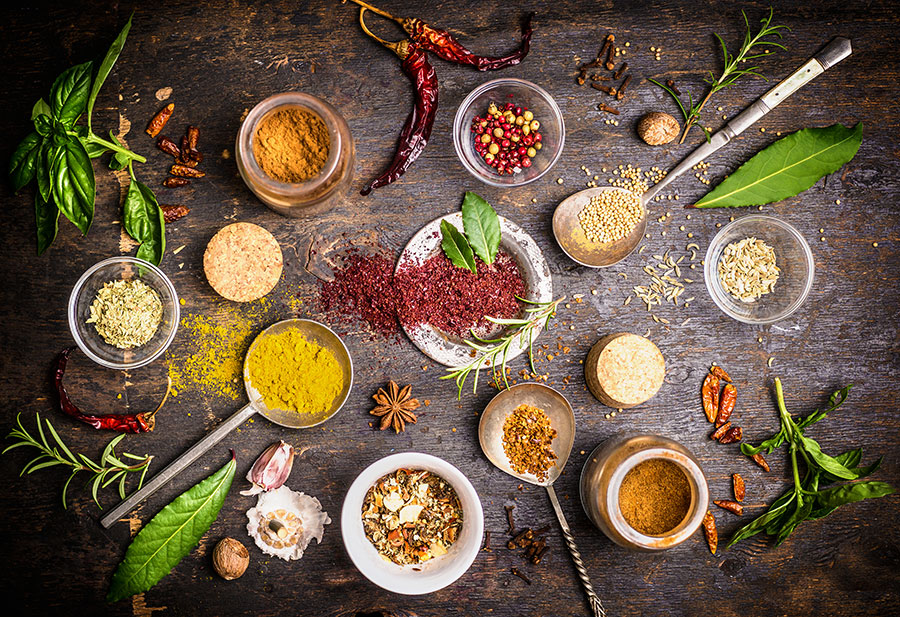 a full spectrum of medicinal foods are an essential addition to any conscious kitchen. photo: vicuschka photocase.com
a full spectrum of medicinal foods are an essential addition to any conscious kitchen. photo: vicuschka photocase.com
Powerful Medicinal Foods to Keep in Your Kitchen
No herbalist should be caught without some recourse in the event of illness or injury. Sometimes the simple application of ice or cold water to an inflammation or a hot salt bath to relieve muscle pain is all it takes.
And we should all have herbs and spices—themselves powerful medicinal foods—waiting on the kitchen shelf, if we just know how to use them.Please only buy and use organic herbs, spices and medicinal foods. Non-organic, commercially grown herbs are sprayed with bee- and butterfly-killing pesticides such as nicotinamides, and dried non-organic herbs contain concentrated amounts of pesticide residue, which bioaccumulates in human tissue. By purchasing organic herbs and spices you will be doing your part to encourage organic farming, a practice that can ultimately preserve life on Earth.
Basil (Ocimum basilicum)
Use the fresh or dried leaves of this delicious medicinal food to soothe digestion, stomach cramps, and constipation and to ease headaches and depression. The tea will help the lungs when there is catarrh.
Black Pepper (Piper nigrum)
Black pepper is a powerful medicinal food that stimulates digestion and relieves gas. It is warming to the body and helps neutralize toxins when added to meat dishes. Add a few peppercorns to a medicinal decoction when you have a cold. You can also mix powdered black pepper with honey and eat it to help remove phlegm from your system.
Cayenne (Capsicum annuum)
Cayenne is wonderful medicinal food for moving phlegm out of your system—add a pinch to any herbal tea when you are suffering a cold. It actually benefits digestion and can help ward off illness when flu and colds are making the rounds. Take a capsule a day to avoid getting a cold, but avoid overuse and never take Cayenne capsules on an empty stomach! (It won’t hurt you but you will regret it; the burning can be intense.)
Mix Cayenne pepper with vinegar and rub the liniment into arthritic joints. If you cut yourself with a knife in the kitchen, reach for the powdered Cayenne. It aids in clotting and stops bleeding (just don’t get any into your eyes—it stings like crazy).
Cinnamon (Cinnamomum verum)
Add Cinnamon to dishes such as teas, applesauce, and oatmeal to help break up a cold, break a fever, or ease rheumatic complaints. Taken over time as a medicinal food, cinnamon capsules have been shown to help lower bad cholesterol levels, and Cinnamon tea is a great remedy for diarrhea.
Fennel (Foeniculum vulgare)
Fennel seeds (and spring-gathered roots, too, if you have them) are a tasty medicinal food used to dispel gas, bring on breast milk, and help digestion. Cramps and colic can be eased by Fennel tea and it is also useful to expel phlegm and catarrh. Oil of Fennel can be rubbed on painful arthritic limbs. The tea of the seeds has been used as an eyewash for eyestrain and other irritations (be sure to filter carefully with an organic coffee filter before you apply to your eyes). Taken with honey, Fennel is a natural cough remedy. Try mixing the slightly cooked chopped roots into raw local honey; allow the roots to steep for a few months.
Garlic (Allium sativum)
Garlic, a staple medicinal food found in nearly every kitchen, benefits fevers and poor digestion, and it helps the liver and gallbladder. It also helps clear plaque from the arteries and balances or lowers blood pressure. For antibiotic and antiviral effects, it is best taken raw. Please use only old-fashioned stinky Garlic. The “odorless” variety has been genetically modified and is far less effective. Soak Garlic in local raw honey, and when you need a cough or sore throat remedy, blend honey with fresh lemon juice or organic apple cider vinegar, and sip. For intestinal worms, make a strong tea of Garlic and grated fresh Ginger, strain, and use in enemas.
Everybody needs to have Garlic in the kitchen and use it liberally in their cooking. Garlic can be slipped under the skin of a chicken before roasting, added to stir-fries and soups, chopped and added to hamburgers, chopped and mixed into butter and slathered on bread, chopped into salads, or even swallowed in pill-sized pieces, making it a truly versatile (and tasty) medicinal food. Eating a sprig of fresh parsley and a teaspoon of honey after eating Garlic is supposed to prevent alliaceous breath.
For a sore throat remedy: Place unpeeled cloves of raw Garlic in a pan and dry-roast until they are soft to the touch. Remove from the pan and cool. Peel and eat the resulting soft Garlic paste. (It is also excellent any time when spread on toast or crackers.)
For a cold: Steep peeled cloves of garlic in brandy for two weeks, strain, and keep for up to a year. Take five to twenty-five drops in hot water every few hours.
Horseradish (Armoracia rusticana)
If you are a fan of sushi you may have tried Wasabi (Wasabia japonica, Eutrema japonica), which is not really a horseradish but a paste that has very similar effects. You may also have noticed that it goes right up your nose to your sinuses. Horseradish, a medicinal food with a kick, does the same thing, hinting at its virtue in healing sinus infections and head colds. It is a key ingredient in Fire Cider (see page 51 of my book Secret Medicines from Your Garden: Plants for Healing, Spirituality, and Magic for instructions) and can be mixed into tomato juice or a mixed vegetable juice (along with Lemon, Garlic, and Cayenne) to make a fabulous cold cure. You can also eat it with red meats to counteract toxins.
Oregano (Origanum vulgare)
Oregano leaf is another delicious medicinal food can be chewed or added to foods to improve digestion; it will also help clear phlegm from the lungs and digestive tract (which may be a reason it has been traditionally put into cheesy and pasta-rich Mediterranean dishes). Oregano is a strong antioxidant, which may reduce “bad” cholesterol. (Thyme does too, so why not combine them for a stronger effect?)
Oregano is antiviral and anti-inflammatory and may even have cancer-preventing properties. Whether eaten as a simple medicinal addition to your dishes or taken as a tea, Oregano has been used for urinary conditions, painful menstruation, coughing, asthma, and arthritis. Oregano tea can also be used as a gargle for mouth irritations.Peppermint (Mentha piperita)
Peppermint tea is a nice digestive aid that also helps lower body temperature when there is a fever (drink it as hot as possible for the latter effect). Taken with honey (try adding some fresh lemon peel to enhance the flavor), it can soothe a sore throat, ease insomnia, stop nervous vomiting, lessen a headache, and even stimulate your sex life (it’s a reputed aphrodisiac), making it a versatile medicinal food.
Externally, a strong Peppermint tea can be added to a cool compress for a headache and can ease heat exhaustion by being applied cold to the temples, wrists, armpits, and groin. Use it as a wash for itching skin or add it to the bath.
Caution: Continuous use of Peppermint may result in heart issues.
Sage (Salvia officinalis)
Sage, a highly medicinal plant and food, makes a wonderful tea that is drying to the body; it can dry up breast milk and also wet, mucusy conditions such as bronchitis. It can help dry excessive perspiration and night sweats. Nervous conditions, menstrual problems, depression, vertigo, diarrhea, and upset stomach may be eased by Sage tea. Sage makes a nice gargle for sore throats and the leaves or tea can be applied as a poultice or wash for insect bites and rashes.
Native American White Sage (Salvia apiana) has similar qualities. The wild Lyre-Leaved Sage (Salvia lyrata) is stronger and should only be used in mixtures. Native American herbalists used the root in healing salves and the whole plant was taken in teas for coughs and colds, nervous conditions, and asthma, as a laxative, and as a diuretic.Sage can be taken to counter addiction to sweets and even excessive sexual cravings, but overuse of Sage could cause poisoning symptoms, making it a medicinal food to use more sparingly. My old teacher, William LeSassier, used to say that overuse of this herb will make you “boring.”
Turmeric (Curcuma longa)
Perhaps the most famous medicinal food at the moment, this spice is most commonly used in Indian curry. Whether eaten or made into a tea, it is beneficial to the liver, helps digestion, and can ease arthritis and rheumatism. It is an immune booster that has been recommended in anti-cancer strategies. Turmeric also benefits hypertension and can help lower blood sugar levels. Mixed into warm milk, it is a classic remedy for joint and muscle pain.
To make the tea: Simmer half a teaspoon in one cup of milk (for the joints and for tissue repair) or water (for liver detox) for a few minutes.
Another way to use this powerful medicinal food is to make a nice anti-inflammatory tea is to mix powdered Turmeric with honey and powdered black pepper. When you need the tea, just put a tablespoonful of the paste in a cup, pour in hot water, and add lemon to taste if desired.
According to Tibetan medicine:
+ Take Turmeric before meals to benefit the lungs and throat.
+ Take it with a meal to enhance digestion.
+ Take it after meals to aid the colon and kidneys.
Turmeric powder can be combined with grated or powdered Ginger and olive oil to make a liniment for arthritic joints.
This article on medicinal foods and herbs is excerpted from Secret Medicines from Your Garden: Plants for Healing, Spirituality, and Magic by Ellen Evert Hopman. Printed with permission from the publisher Inner Traditions International. InnerTraditions.com.
About The Author
Ellen Evert Hopman is a Druid Priestess, master herbalist and lay homeopath who holds an M.Ed. in Mental Health Counseling. She teaches Herbal and Druidic workshops across the USA and has taught in Scotland and Ireland. Visit her website: elleneverthopman.com.










